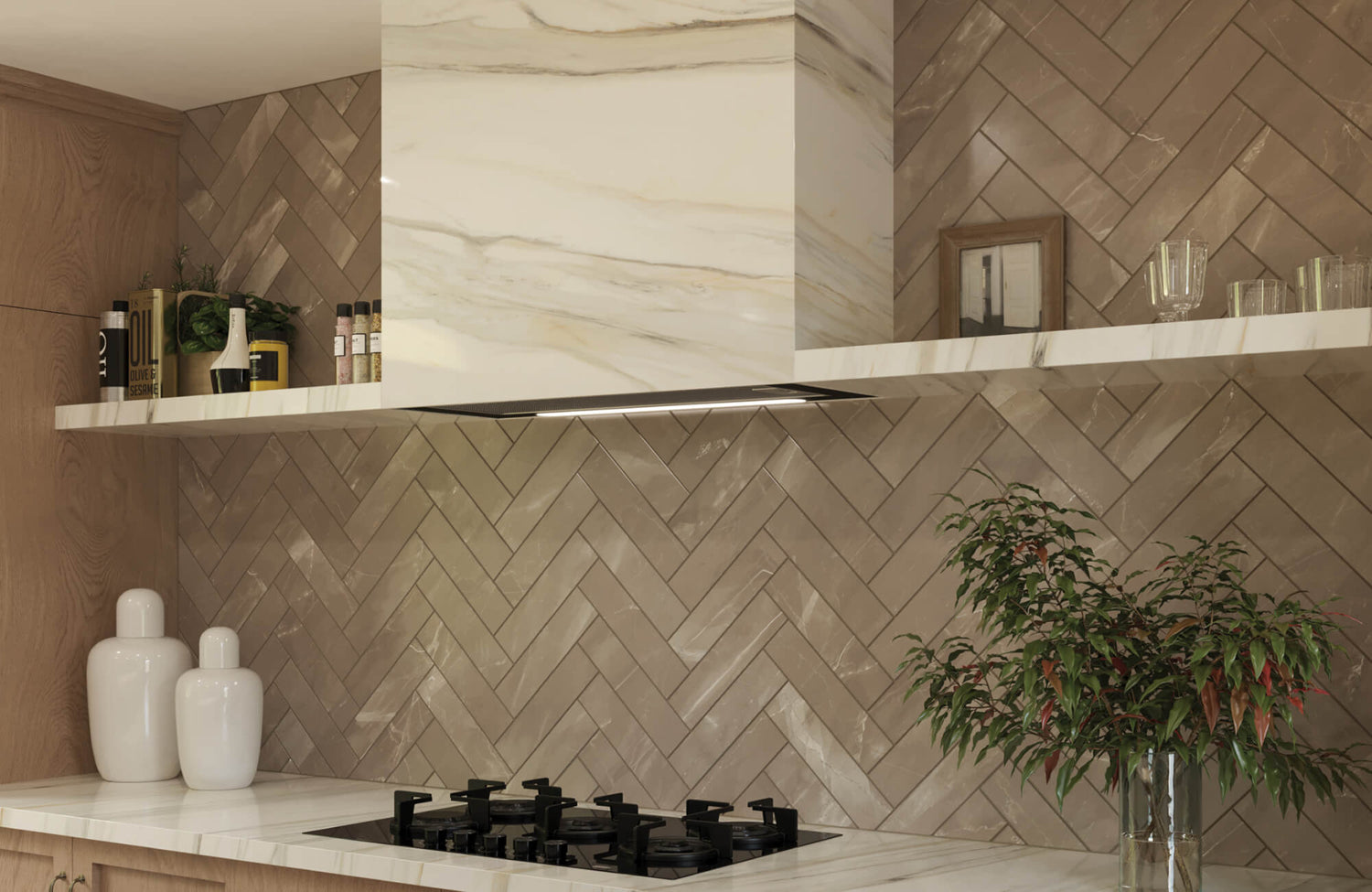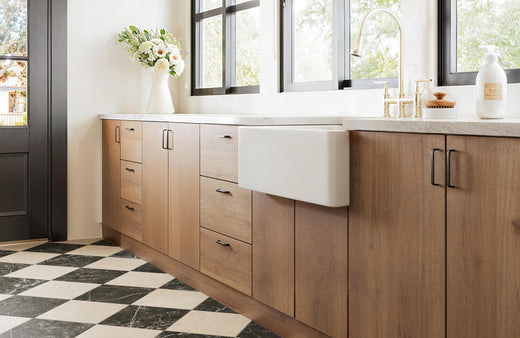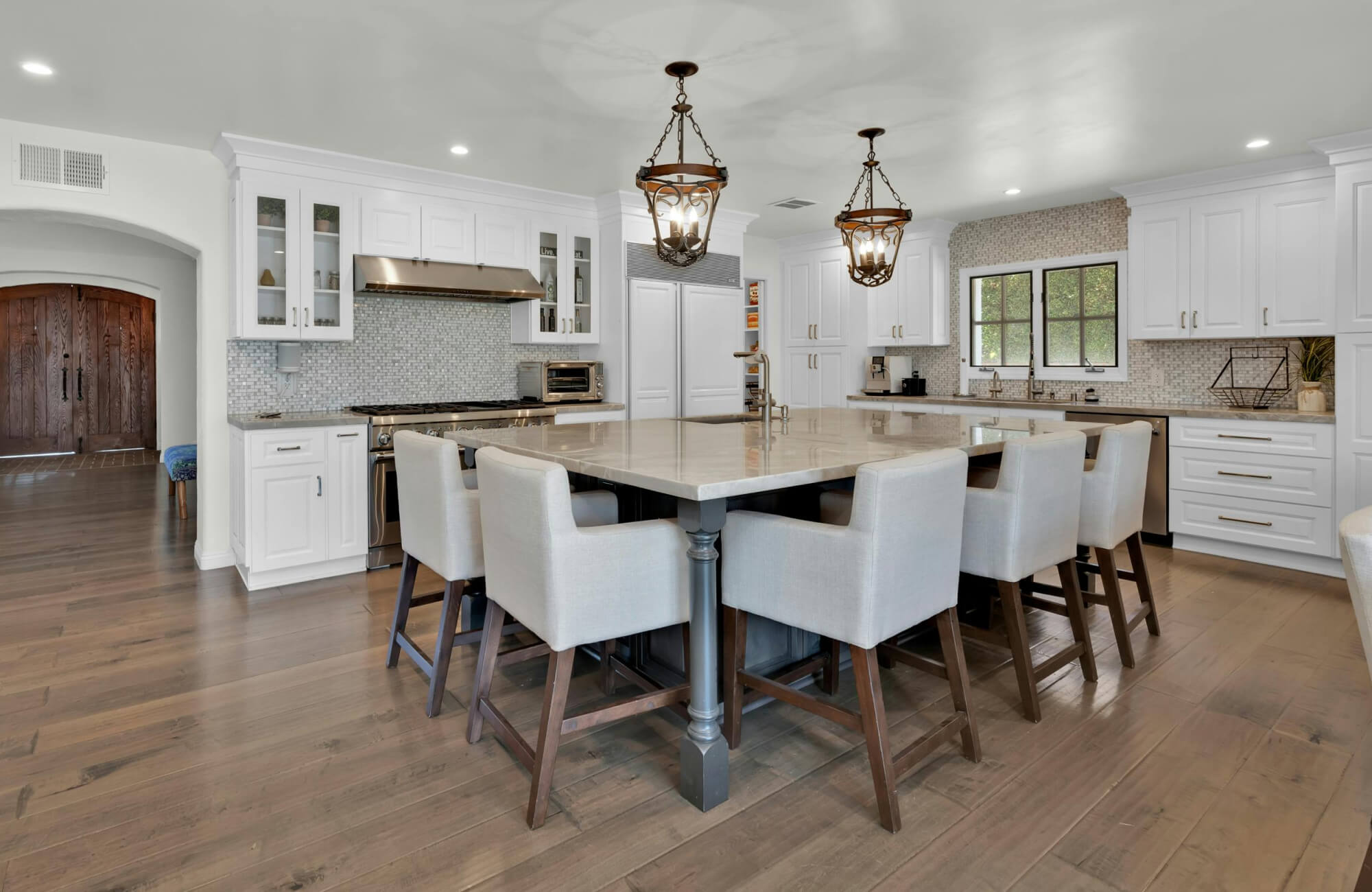Subway tile spacing plays a crucial role in achieving the perfect look and functionality for these timeless tile installations. The right spacing not only impacts the visual appeal but also ensures a seamless, durable finish tailored to your design goals.
In this article, we’ll explore the pros and cons of different tile spacing options, from ultra-sleek to classic and rustic styles. Plus, we’ll share expert tips on grout selection and avoiding common spacing mistakes, helping you achieve a polished, professional result.
Why Tile Spacing Matters for Subway Tiles
Tile spacing refers to the intentional gaps left between subway tiles during installation, ensuring alignment, durability, and overall design integrity. These spaces play a crucial role in accommodating grout lines, which not only hold the tiles in place but also enhance the final appearance by balancing visual flow and functionality.
For example, minimal spacing creates a sleek, seamless look that suits modern spaces, while wider spacing emphasizes the grout lines, adding definition and texture that complement traditional themes. Ultimately, choosing the right tile spacing impacts both the aesthetics and practicality of subway tile installations, setting the tone for a polished, long-lasting result.
The Pros & Cons of Different Subway Tile Spacing
Choosing the right subway tile spacing can significantly affect both the overall aesthetic and functionality of your design. Each spacing option comes with its own set of advantages and challenges.
1/32 Inch Spacing
1/32 inch spacing offers an ultra-seamless look, making it ideal for clean, precise designs that prioritize modern minimalism. This minimal grout line creates a polished, almost grout-free appearance that works beautifully with high-quality, uniform materials such as rectified porcelain subway tiles or glass tiles. However, it requires expert installation and perfectly cut tiles, as even the smallest irregularities can disrupt the flow. As such, this option is best suited for experienced installers and premium tile materials.
1/16 Inch Spacing
1/16 inch spacing provides a sleek, contemporary look with subtle grout lines that add just enough definition without overwhelming the design. It’s an excellent choice for modern interiors, where clean lines and precision are key. However, this spacing also demands careful subway tile placement and high precision during installation, as uneven tiles or surfaces can easily stand out. When executed well, this option enhances the overall visual appeal while maintaining a balanced, understated finish.
1/8 Inch Spacing
1/8 inch spacing strikes a perfect balance between versatility and practicality, making it one of the most popular options for subway tile installations. It easily accommodates slight tile variations, simplifying the installation process and making it a forgiving choice for less uniform tiles. The more noticeable grout lines can also add subtle definition to the layout, giving it a classic, timeless appeal. That said, regular cleaning is important to ensure grout lines remain fresh and maintain their visual charm over time.
1/4 Inch Spacing
1/4 inch spacing is particularly perfect for rustic or handmade subway tiles, where size inconsistencies are more common. The wider grout lines make the installation process easier, as they allow for adjustments and a more forgiving layout. This option also works particularly well in spaces that embrace a relaxed, textured aesthetic, such as farmhouse kitchens or industrial-inspired rooms. However, it’s important to note that the prominent grout lines can dominate the design, giving it a more casual and less polished appearance.
If you want to see how the right subway tile spacing can transform your space, try our augmented reality (AR) tool. It's a great way to test out different options and see how each tile layout affects your interior design before making a final decision.
The Best Grout for Subway Tiles
Aside from spacing, grout color plays a crucial role in defining the overall look of subway tile installations. For a clean and seamless finish, matching grout blends effortlessly with the tiles, creating a uniform appearance that suits minimalistic and contemporary designs. Contrasting grout color, on hand, draws attention to the individual tiles and spacing, creating a bold, defined look that can add depth and visual appeal. Choosing between these options depends on the aesthetic you’re aiming for and whether you want the tiles to subtly blend in or make a striking statement.
It is also essential to focus on quality and durability. Opt for mold-resistant grout in moisture-prone areas like kitchens and bathrooms to prevent discoloration and long-term damage. In addition, stain-resistant grout ensures easier cleaning and maintenance, keeping your tiles looking fresh and polished. Prioritizing high-quality grout not only enhances the visual appeal of your installation but also ensures it stands the test of time.

Mistakes to Avoid with Subway Tile Spacing
Proper tile spacing is critical for achieving a professional and polished look, but common mistakes can easily derail the installation process. Inconsistent gaps, for example, can create an uneven appearance that distracts from the clean lines of subway tiles. Skipping tile spacers is another frequent error that leads to misaligned tiles, especially in high-visibility areas like corners and edges. To avoid these issues, using reliable tile spacers and double-checking alignment throughout the process ensures precise and uniform spacing.
Uneven surfaces can also pose challenges during installation, making careful planning essential. If tiles are misaligned due to an irregular wall or floor, adjustments like leveling the surface beforehand or making slight tile corrections can save time and frustration. Always inspect alignment as you progress, especially around corners or edges where mistakes are more noticeable. By focusing on precision and planning, you can avoid costly errors and achieve a seamless, visually stunning subway tile installation.
Choosing the Right Subway Tile Spacing
The right spacing is essential for achieving the perfect balance between aesthetics and functionality in subway tile installations. Not only does proper spacing ensure a clean, polished design, but it also accommodates practical needs like tile variations and long-term maintenance.
If you're exploring subway tile options and need expert guidance on selecting the ideal spacing, grout, or overall design for your project, feel free to contact us! Our team is here to help you create a space that blends style, precision, and lasting functionality, perfectly tailored to your unique needs and vision.










